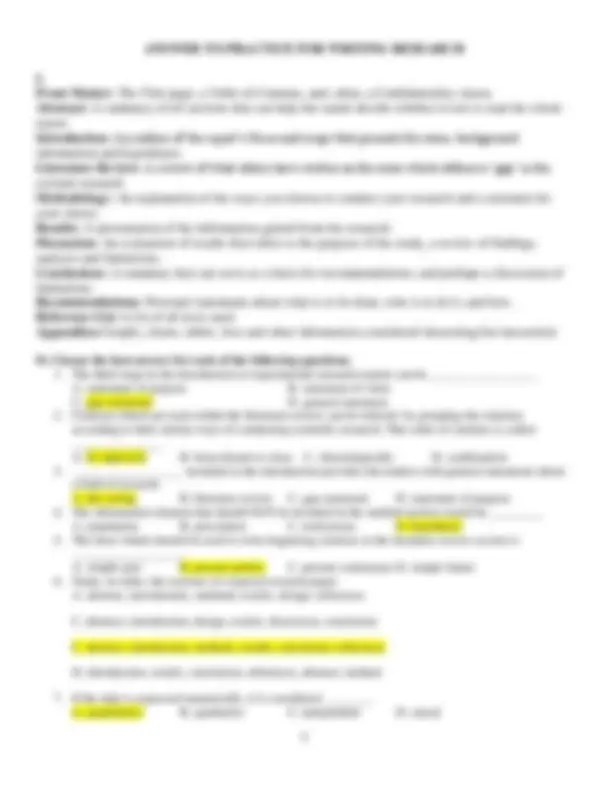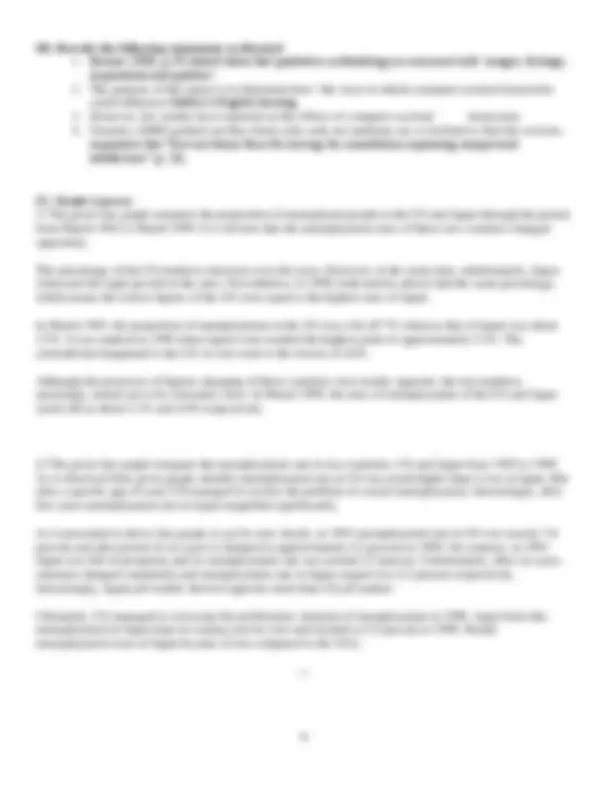




Study with the several resources on Docsity

Earn points by helping other students or get them with a premium plan


Prepare for your exams
Study with the several resources on Docsity

Earn points to download
Earn points by helping other students or get them with a premium plan
Community
Ask the community for help and clear up your study doubts
Discover the best universities in your country according to Docsity users
Free resources
Download our free guides on studying techniques, anxiety management strategies, and thesis advice from Docsity tutors
File ôn tập môn viết nghiên cứu
Typology: Exercises
1 / 4

This page cannot be seen from the preview
Don't miss anything!



I. Match the elements of a research report with the section names. a. _ 3 _ Front matter b. ___ Abstract c. ___ Introduction d. ___ Literature review e. ___ Methodology f. ___ Results g. ___ Discussion h. ___ Conclusions i. ___ Recommendations j. ___ Appendices k. ___ Reference list
1. A list of all texts used 2. A presentation of the information gained from the research 3. The Title Page, a Table of Contents, and, often, a Confidentiality Clause 4. An outline of the report’s focus and scope that presents the issue, background information and hypotheses 5. A review of what others have written on the issue which defines a ‘gap’ in the existent research 6. An explanation of the ways you choose to conduct your research and a rationale for your choice 7. Graphs, charts, tables, lists and other information considered interesting but inessential 8. An evaluation of results that refers to the purpose of the study, a review of findings, analysis and limitations 9. Personal statements about what is to be done, who is to do it and how 10. A summary of all sections that can help the reader decide whether or not to read the whole report 11. A summary that can serve as a basis for recommendations, and perhaps a discussion of limitations. II. Choose the best answer for each of the following questions. 1. The third stage in the introduction to experimental research reports can be __________________ A. statement of purpose B. statement of value C. gap statement D. general statement 2. Citations which are used within the literature review can be ordered by grouping the citations according to their similar ways of conducting scientific research. This order of citations is called _______________ A. by approach B. from distant to close C. chronologically D. combination 3. __________________ included in the introduction provides the readers with general statements about a field of research. A. the setting B. literature review C. gap statement D. statement of purpose 4. The information element that should NOT be included in the method section would be _________ A. population B. procedures C. restrictions D. hypothesis 5. The tense which should be used to write beginning citations in the literature review section is __________________. A. simple past B. present perfect C. present continuous D. simple future
III. Rewrite the following statements as directed
III. Rewrite the following statements as directed